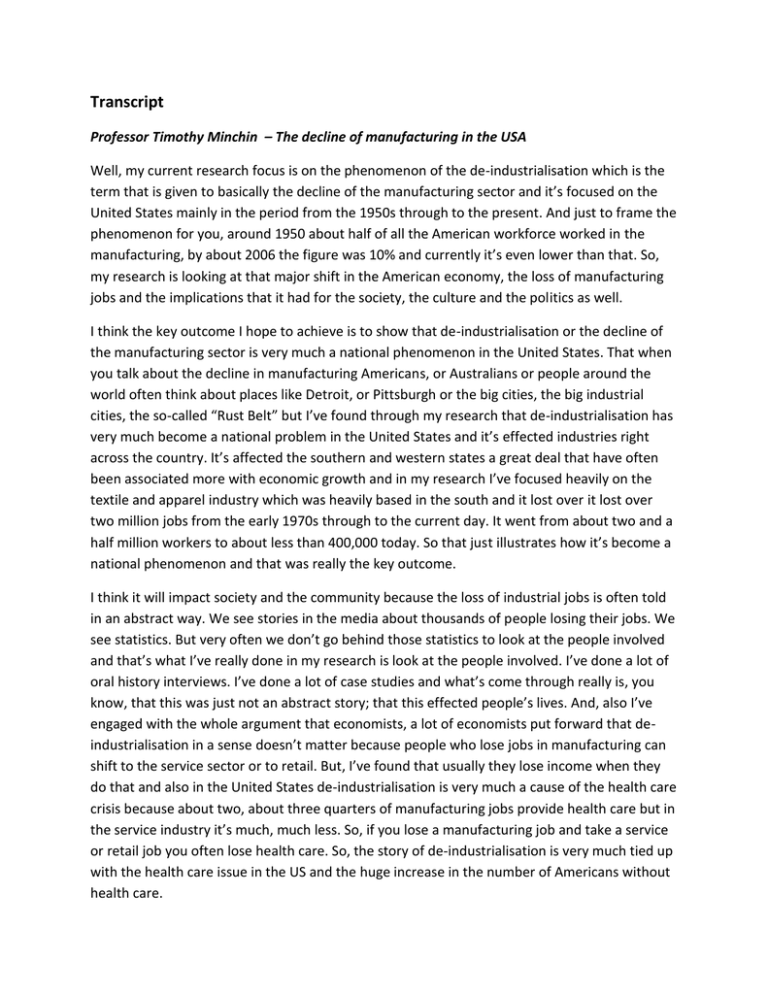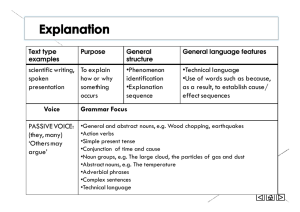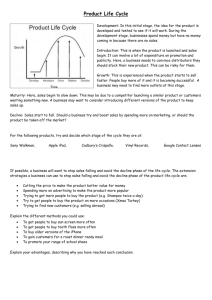Professor Timothy Minchin Transcript
advertisement

Transcript Professor Timothy Minchin – The decline of manufacturing in the USA Well, my current research focus is on the phenomenon of the de-industrialisation which is the term that is given to basically the decline of the manufacturing sector and it’s focused on the United States mainly in the period from the 1950s through to the present. And just to frame the phenomenon for you, around 1950 about half of all the American workforce worked in the manufacturing, by about 2006 the figure was 10% and currently it’s even lower than that. So, my research is looking at that major shift in the American economy, the loss of manufacturing jobs and the implications that it had for the society, the culture and the politics as well. I think the key outcome I hope to achieve is to show that de-industrialisation or the decline of the manufacturing sector is very much a national phenomenon in the United States. That when you talk about the decline in manufacturing Americans, or Australians or people around the world often think about places like Detroit, or Pittsburgh or the big cities, the big industrial cities, the so-called “Rust Belt” but I’ve found through my research that de-industrialisation has very much become a national problem in the United States and it’s effected industries right across the country. It’s affected the southern and western states a great deal that have often been associated more with economic growth and in my research I’ve focused heavily on the textile and apparel industry which was heavily based in the south and it lost over it lost over two million jobs from the early 1970s through to the current day. It went from about two and a half million workers to about less than 400,000 today. So that just illustrates how it’s become a national phenomenon and that was really the key outcome. I think it will impact society and the community because the loss of industrial jobs is often told in an abstract way. We see stories in the media about thousands of people losing their jobs. We see statistics. But very often we don’t go behind those statistics to look at the people involved and that’s what I’ve really done in my research is look at the people involved. I’ve done a lot of oral history interviews. I’ve done a lot of case studies and what’s come through really is, you know, that this was just not an abstract story; that this effected people’s lives. And, also I’ve engaged with the whole argument that economists, a lot of economists put forward that deindustrialisation in a sense doesn’t matter because people who lose jobs in manufacturing can shift to the service sector or to retail. But, I’ve found that usually they lose income when they do that and also in the United States de-industrialisation is very much a cause of the health care crisis because about two, about three quarters of manufacturing jobs provide health care but in the service industry it’s much, much less. So, if you lose a manufacturing job and take a service or retail job you often lose health care. So, the story of de-industrialisation is very much tied up with the health care issue in the US and the huge increase in the number of Americans without health care.




